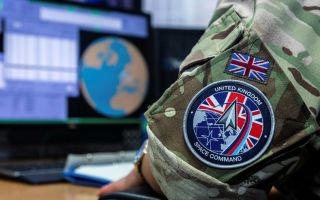Navy
Royal Navy Marks Historic Moment At Remote Island
The Royal Navy has achieved a historic milestone after HMS Lancaster’s Wildcat helicopter became the first to land St Helena’s new airport.
Situated between South America and Africa in the South Atlantic Ocean over 1,000 miles from the nearest mainland, it's one of the most remote islands in the world.
But it's about to become a lot easier to access when St Helena Airport officially opens on the island early next year.
St Helena's brand new runway
It's been a major project for the island, and now as it nears completion, HMS Lancaster’s new Wildcat (callsign VOODOO) touched down and made history.
Lancaster is also the first Royal Navy frigate to deploy with the advanced maritime attack helicopter which has been conducting reconnaissance and taking aerial photos of the island.
Her crew, meanwhile, are wearing the first new Naval uniform in 70 years.
Part of 825 Naval Air Squadron, based at Royal Naval Air Station (RNAS) Yeovilton in Somerset, VOODOO is piloted by Flight Commander Dave Neyland, who said:
“Landing at St Helena airport was a fantastic opportunity to bring a brand new helicopter to a brand new airport, particularly during such an historic period for the island. The airport will usher in a new era for the local community and I was delighted to be a part of that.”
Welcoming the inaugural helicopter flight, the island’s Governor Mark Capes said:
“St Helena is working its way through a period of profound change. We are now on the brink of joining the rest of the world, by moving from travelling overseas by sea, to travelling by air."
“Of course, amid all this change some things will remain constant. As a remote island surrounded by thousands of miles of ocean, our links with the sea will remain strong. Those links are also part of our history, part of our culture and have shaped the way we live.”
Last month the first plane – a Beechcraft King Air 200 – landed at St Helena Airport having flown from Angola prior to conducting a series of calibration flights.
HMS Lancaster’s Wildcat is the latest generation of maritime attack helicopter for the Royal Navy and has been designed for a variety of roles, including anti-ship, anti-submarine, ship protection, casualty evacuation, battlefield reconnaissance and general utility.
Portsmouth-based frigate HMS Lancaster has now completed seven months of her nine month deployment, having travelled 28,000 miles and made 16 port visits over four continents.
The ship is now on the final leg of her deployment with a busy schedule of Maritime Security and Defence Engagement ahead of her. On leaving St Helena, she will visit a further seven countries.
Click here, meanwhile, to find out about Ascension Island - St Helena's closest neighbour at a distance of 810 miles, which is currently celebrating 200 years as part of the UK.









